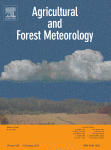Grazers have marked effects on decomposition and N cycling processes, generally resulting in increased net N mineralization. Within landscapes, topographic and edaphic gradients also affect these microbial processes. The objective of this study was to evaluate the effects of grazers on N cycling processes in a landscape context that encompassed a wide range of environmental conditions in order to increase our mechanistic understanding of these processes and provide a stronger basis for management and assessment of grassland ecosystems. This study was conducted on a series of 37–41-year-old grazing exclosures on the northern winter range of Yellowstone National Park. We measured gross and net mineralization, nitrification and immobilization in grazed and ungrazed plots in upland and bottomland landscape positions by 15N pool dilution in a laboratory incubation with intact cores. There were no significant differences in either gross mineralization, immobilization, gross nitrification or NO3 immobilization between grazed and ungrazed plots in a paired t-test using all plots (P=0.52, P=0.32, P=0.91 and P=0.93, respectively). These results were unexpected, because previous reports indicated that grazers increased soil N dynamics, including net N mineralization, in Yellowstone grassland, and suggest that herbivore regulation of N processes may accumulate over a longer time scale than was measured in this study (24 h). Instead, we found that landscape position was the dominant factor controlling both mineralization and immobilization rates, with higher rates located at the bottoms of the slopes (32.9 and 33.4 g N g soil1 d1, respectively), compared to the upland sites (4.4 and 3.2 g N g soil1 d1, respectively). Gross mineralization and immobilization rates were highly correlated with soil C and N content, while gross nitrification was not. Turn over times for NH4+ and NO3 pools averaged 1.2 days for the NH4+ pool and 2.25 days for the NO3 pool. There was no apparent effect of grazers on turnover times, nor were there any significant correlations between turnover times and soil C and N pools, slope position, or soil water content. Previous modeling to understand how herbivores affect N cycling suggested that stimulation of net mineralization was most likely due to grazers suppressing immobilization by reducing belowground primary productivity and organic matter inputs to the soil. Our results do not suggest that grazers suppress immobilization. If anything, they suggest that grazers enhance this process, especially in the more mesic components of the landscape. Landscape position effects on N cycle processes were much stronger than grazer effects in this study, and appear to be driven by soil C and N contents.
DOI:
https://doi.org/10.1016/S0038-0717(02)00155-4
Altmetric score:
Dimensions Citation Count:
00155-4&apiKey=3948bb216041dbffcb29a618defafc29&httpAccept=image%2Fjpeg)























